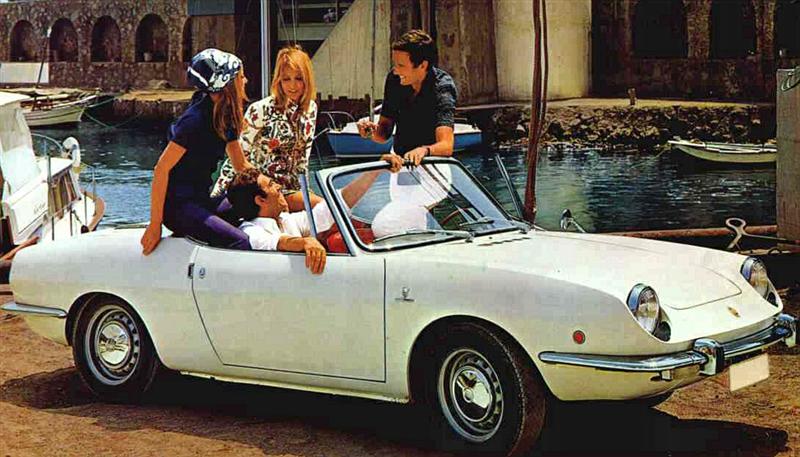Around 20 years after Saab's first car, the 96, was being developed, the company finally got around to adding a newer, larger model. The Saab 99 was produced 1968-1984, and introduced in the USA in 1969. Although they don't seem large today, the 99s looked big at the time they were first seen when compared to the fairly small Saab 96s people were familiar with.
The Wikipedia entry for the 99 is
here. It mentions that it was designed by
Sixten Sason who was responsible for the styling of Saabs up to that point. He died in 1967 while the 99 was being readied for production.
Saab 99s eventually appeared in a four-door version, but the first ones only came with two doors, as
this site mentions.
The Saab 99 was not good looking. This wasn't because it was one of those stark, by-the-book "functional" designs. Instead, while aspects of its appearance might have been rationalized in functionalist terms, it was simply quirky-looking. Rather like a number of French designs.
Gallery
This is a 1966 prototype 99, called Padden (Toad) by Saab staff. The Wikipedia link above states that these early prototypes were cobbled from Saab 96s.
Here is a later, four-door Saab 99 as seen in a publicity photo. The comparatively shorter front door's B-pillar and the post for the rear quarter window (needed so that the main rear door window could be rolled down) resulted in a busy appearance for the passenger greenhouse. Two-door Saab 99s had a cleaner look in that area. Saab 99 windshields were long, shallow curves when seen in plan view. I'm not sure whether this was for aerodynamic reasons or had to do with reducing distortion found in conventional panoramic windshields. Maybe for both reasons. The hood (hinged at the front) had its cut line part way down the front fender. A character line extended this mark to the rear of the car.
Just for fun, here is a publicity photo intended to show how roomy the back seat of a 99 was.
The side character line beginning at the hood transitions to the trunk's rear cut line, a touch that helps to integrate slightly a somewhat confused overall design. Tail lights and rear bumper are spartan, and have a tacked-on appearance. On two-door models such as this, the rear side windows do not roll down; instead, they are hinged at the front and can be unlatched and pivoted out a short distance.
This side view is of a 1972 Saab 99 EMS. It's included to further demonstrate the quirkiness of the design. Front overhang is considerable, but that is the norm for a front-wheel-drive car. Due to its curve, the very front of the windshield is about even with the rear of the wheel opening. This helps make the front look stubby. What looks to be a cabin air outlet, that louvered patch below the C-pillar, is oddly shaped, not fitting into the overall design. If it had to be there, the louvers should have slanted in the opposite direction, reflecting the angle of the C-pillar. Another odd feature is the quasi- sail panel ensemble of the C-pillar, back window, and trunk -- a scooped out look. This helps make the 99 look distinctive and also lightens the appearance compared to, say, a conventional three-box with bustle-back design. But it seems quite unrelated to the rest of the car. Some of this is because the backlight is concave and the windshield is quite convex, giving the greenhouse a disjointed look.
















































